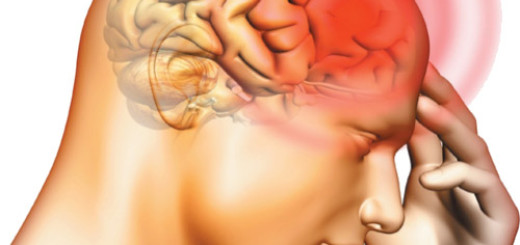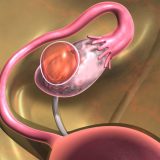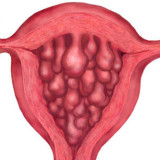A brain cyst is a very common problem of our time. Fortunately, it rarely does much harm to health and lives. And in most cases the cysts can go away on their own. But not always. That is why it is important to learn about cysts in order to attend the doctor in time. He will discover and observe the patient, find out whether there is a cyst. And prevent health deterioration of the patient. The main thing is to find a good doctor and have no fears.
Definition
Medicine defines a brain cyst as a formation or a benign tumor appeared in some parts of the brain. It has a sphere form and usually filled with some liquid. A brain cyst unlike malignant tumour is not formed from the tissue of the affected organ. Treatment and prognosis depend on the cyst type. It is also determined by its location and the tissue from which it is made.
Types of brain cysts
Colloidal cyst
This kind of cysts is found in about half of all children. If paramedics have found out a newborn has a colloidal brain cyst, in 90% of cases the woman who gave the birth is used to fumed. This neoplasm rarely has an instant effect. Only after the growth and, as a rule, in adult age it makes a serious threat. When the cyst enlarges it can blocks the flow of intracranial fluid and causes brain hydrocephalus. And this in its turn leads to different consequences. The consequences can vary from at least a hernia to at worst sudden death. It is also can be a subject of surgical removal in worst cases.
Arachnoid cysts
Arachnoid cyst is one of the most common and relatively safe type of cysts. Usually, this kind of cysts occur in the head of teenagers and children. And there is a tendency that girls have them more often than boys. If the size is small, treatment is not required – just medical watching. Surgery in order to remove is supposed only in case of the cyst growth.
Dermoid or epidermal cyst
A dermoid brain cyst is a tumor-like formation of the dermis, sebaceous glands and epidermis. It may be either small or reach rather big sizes of walnut. Such brain cyst is removed surgically as a rule.
The pineal cyst
This type is the most rare: it occurs in 4% of the population. As a rule, there is such a cyst in the head of an adult. And it can be detected only with the brain tomography. The reasons of the formation are unknown. The patient, who has a pineal cyst should be screened regularly and monitor the dynamics of its growth.
Symptoms of brain cysts
Of course, the earlier the problem of a brain cyst is detected, the easier it is to cure. That is why it is so important to know the symptoms which indicate brain cyst presence. Unfortunately, a brain cyst may go unnoticed for a long time. It can grow up imperceptibly until causes unpleasant sensations and phenomena.
In general symptoms of different brain cyst types are the same. Among them are the following:
- Headache.
- The disequilibrium.
- Partial paralysis.
- Hearing and visual impairment.
- Epilepsy.
- Sudden loss of consciousness.
- The feeling of pressure and pulsation in the head.
Diagnosis and treatment of a brain cyst
The most effective method of detecting a brain cyst is regular medical ultrasound. It is a simple and not expensive test that can prevent a lot of problems.
A brain cyst is treated in two ways: medical and surgical. The last should be used only in extreme cases, when the cyst brings a risk for life or heavy pain.














